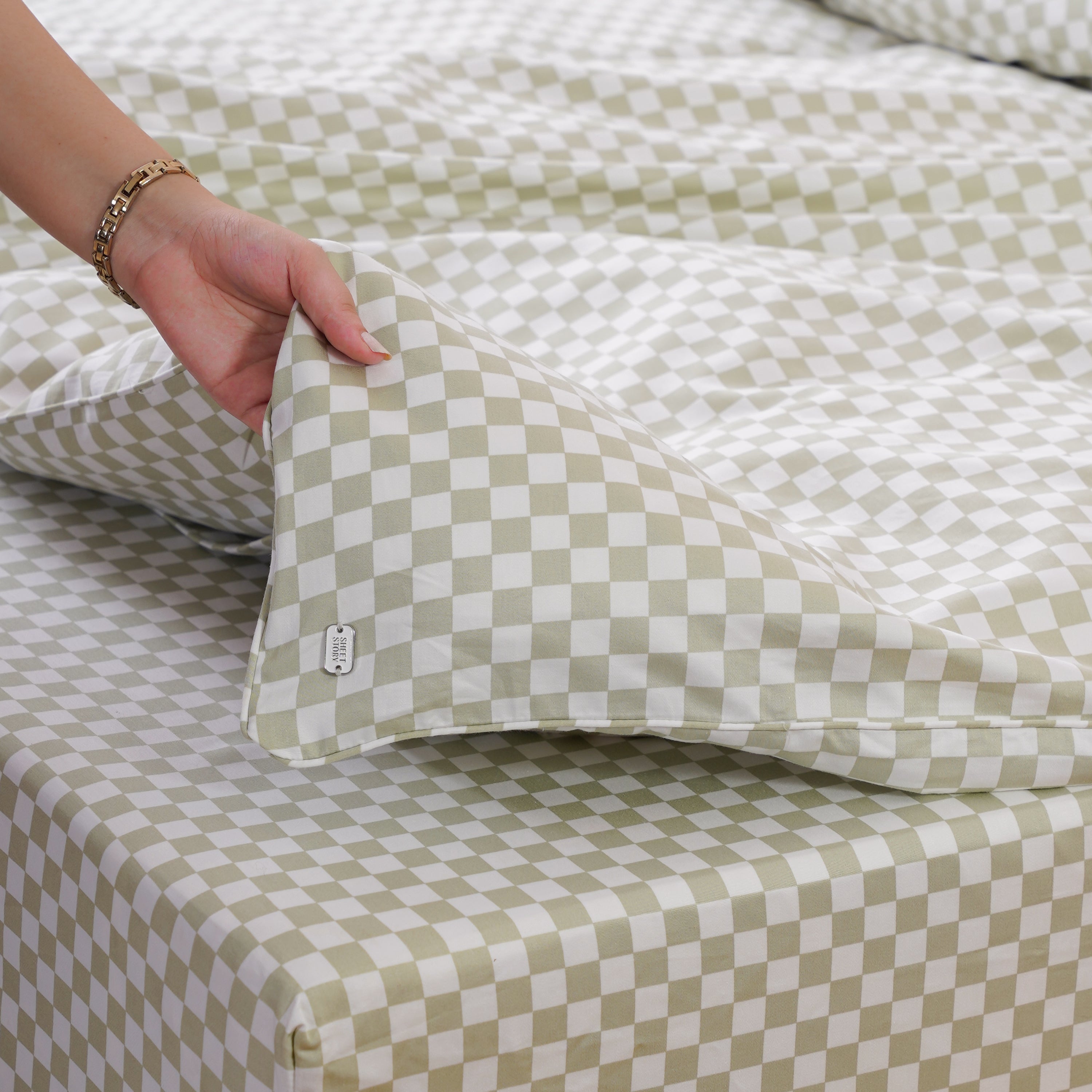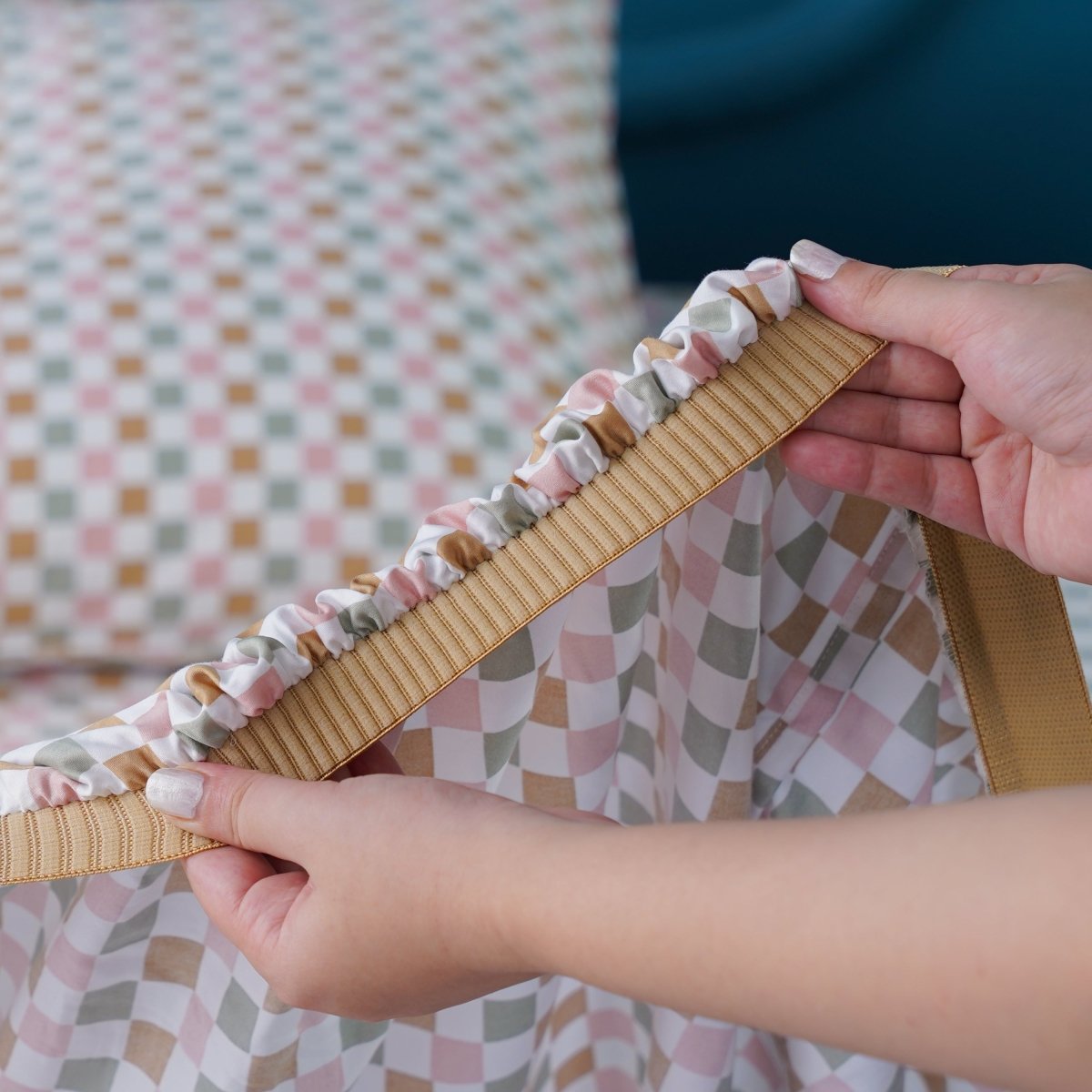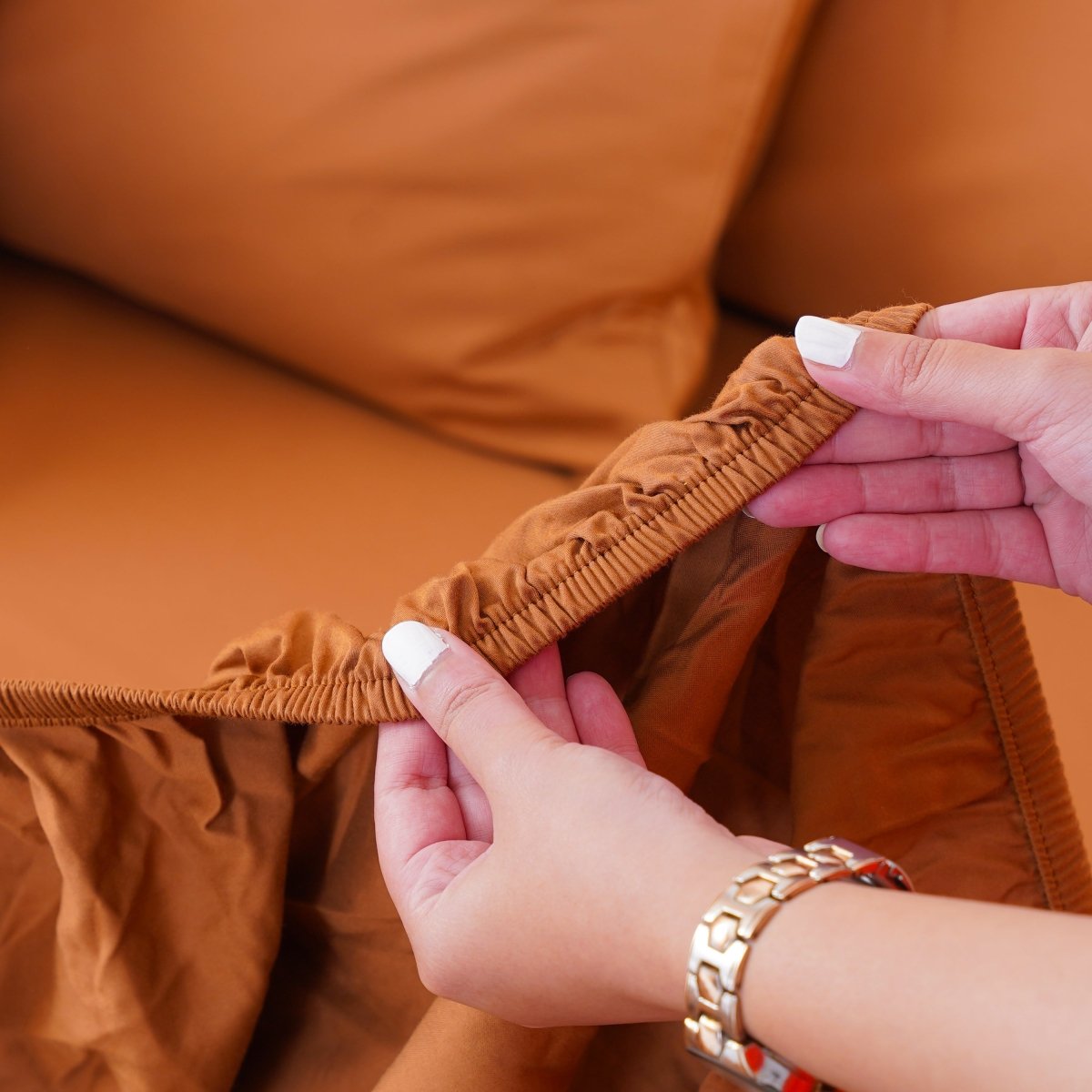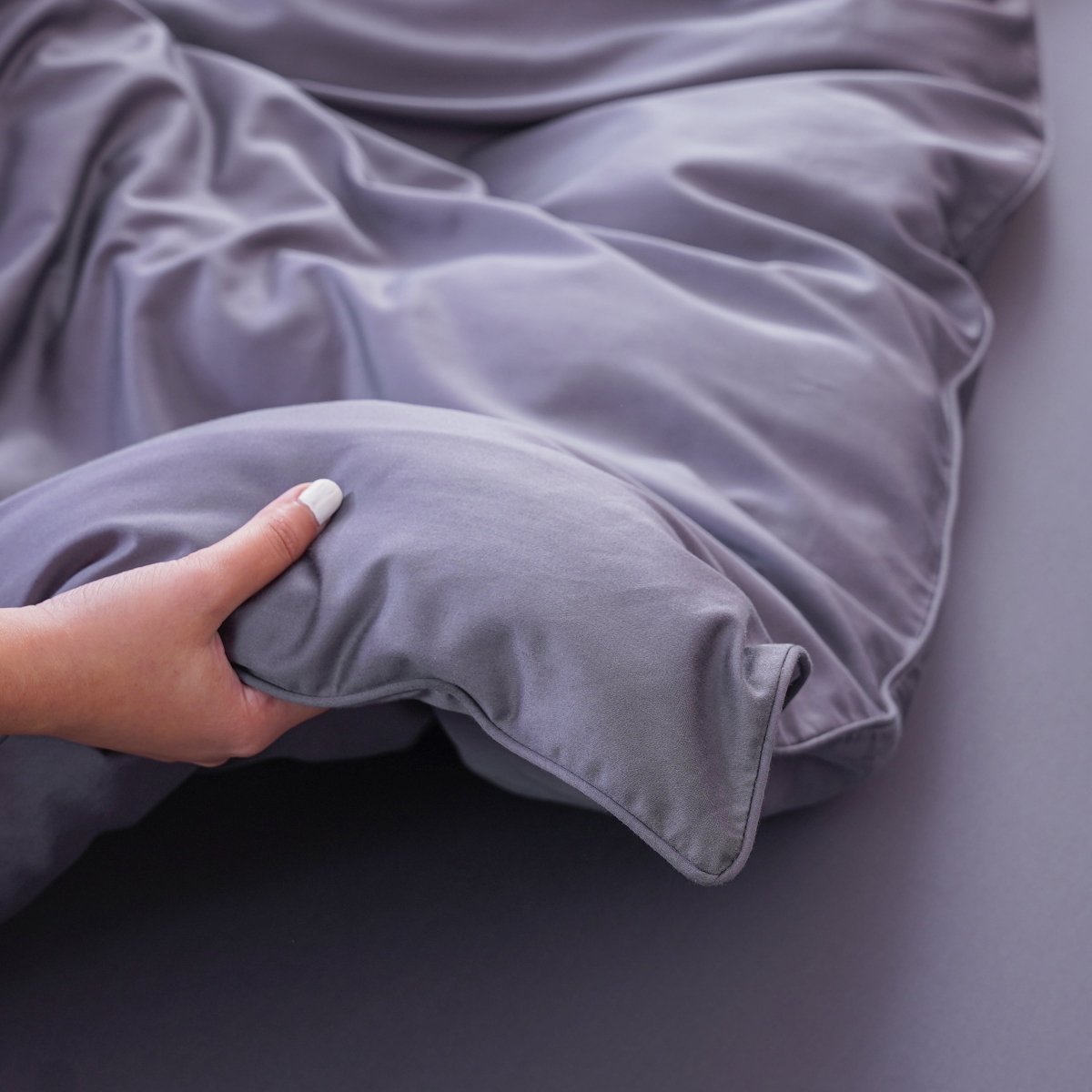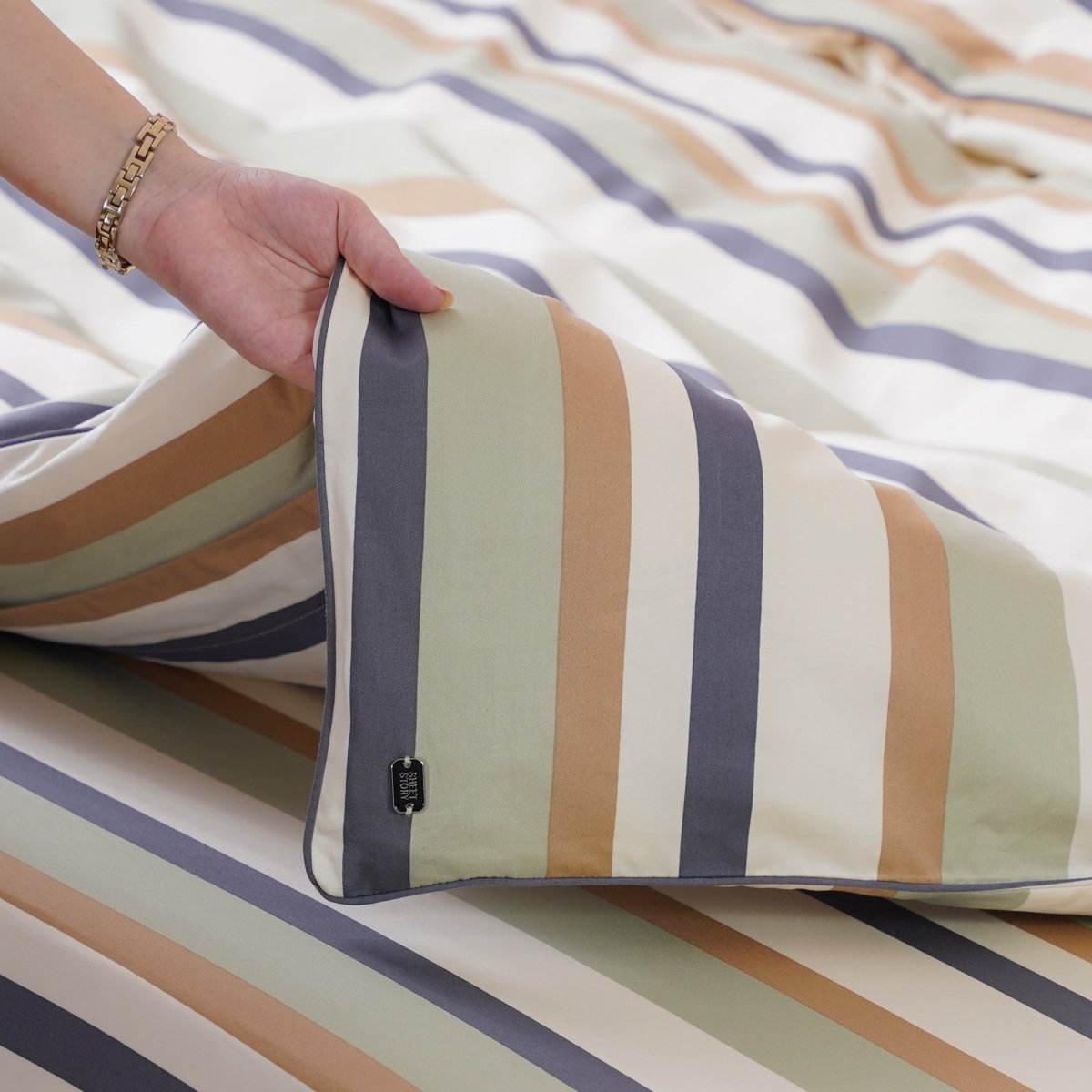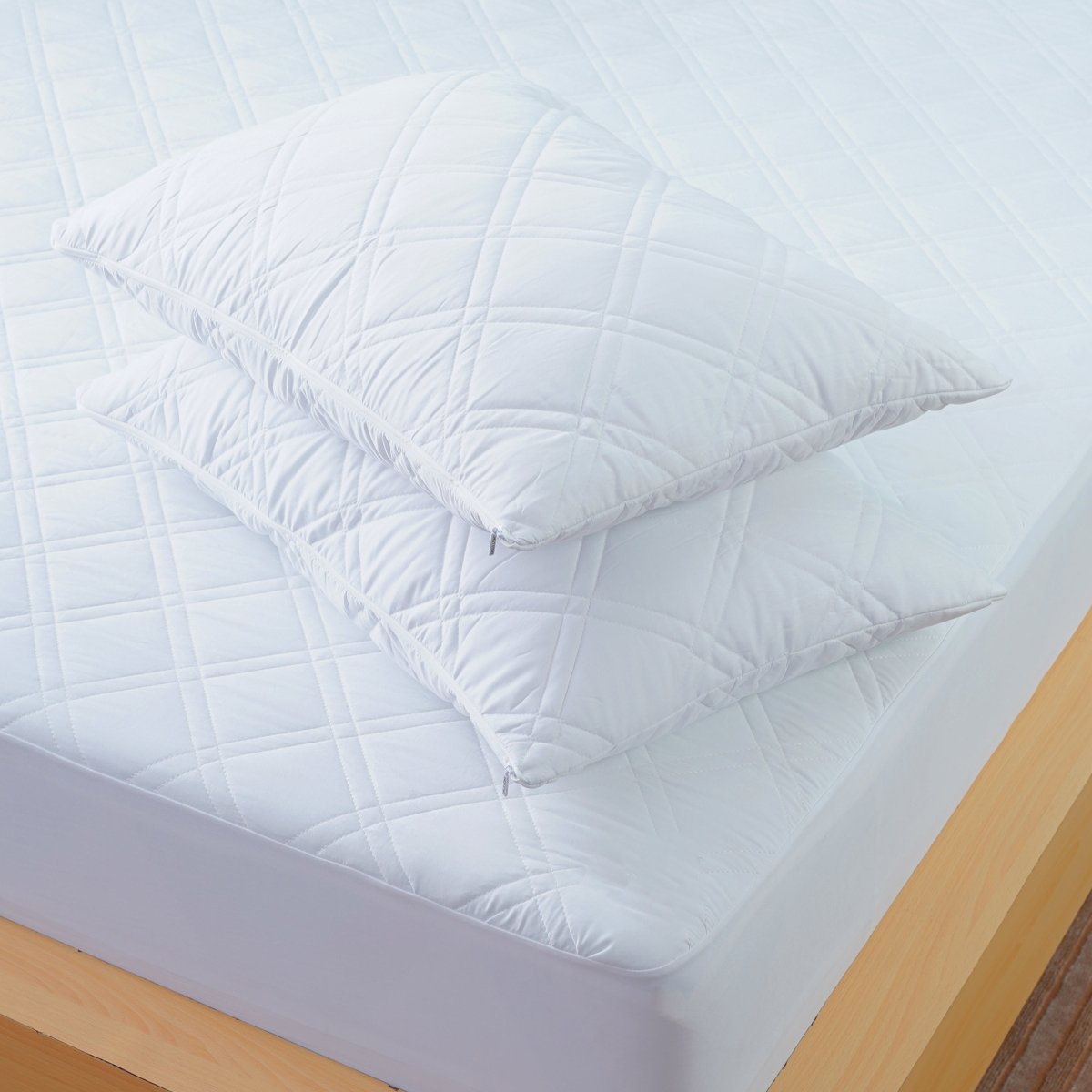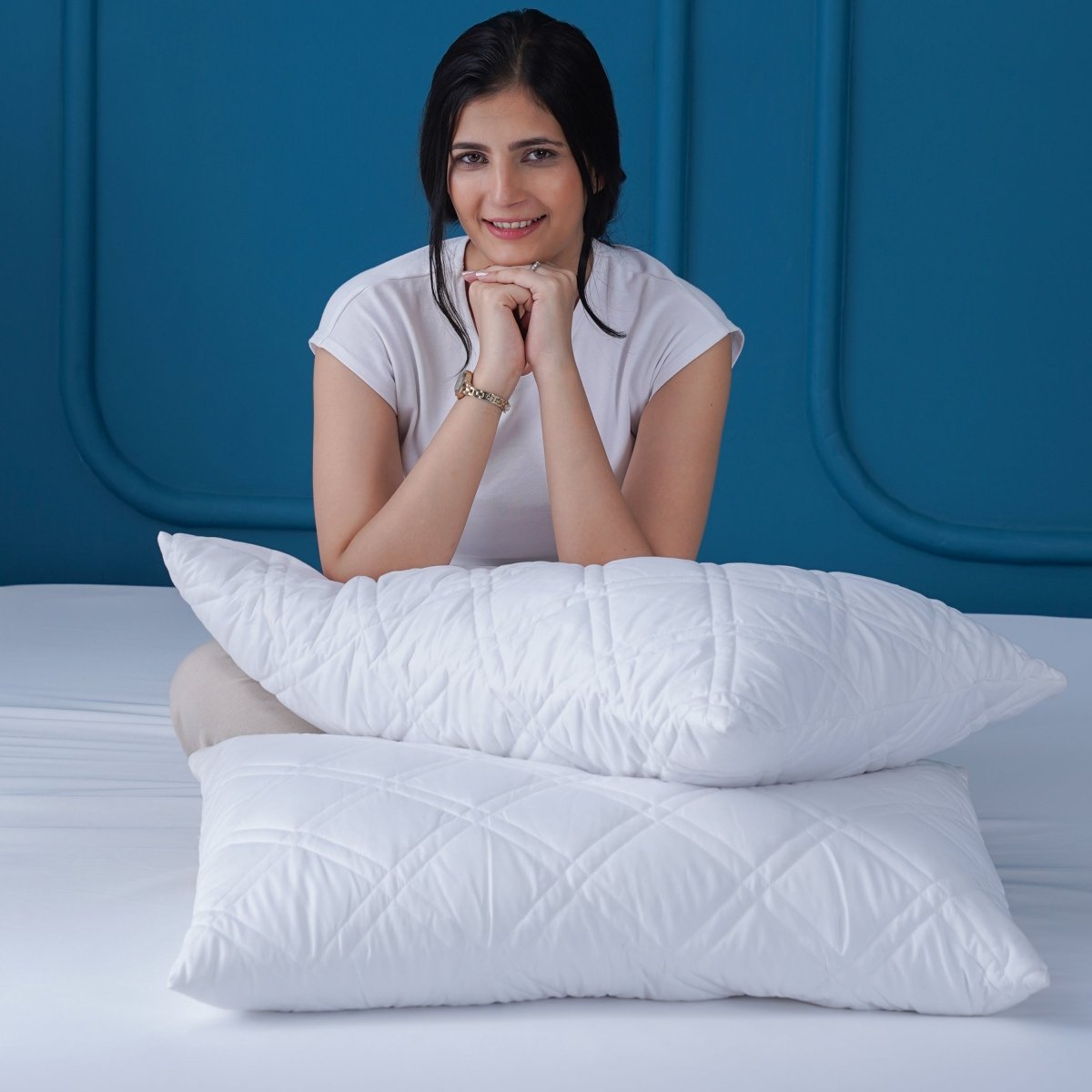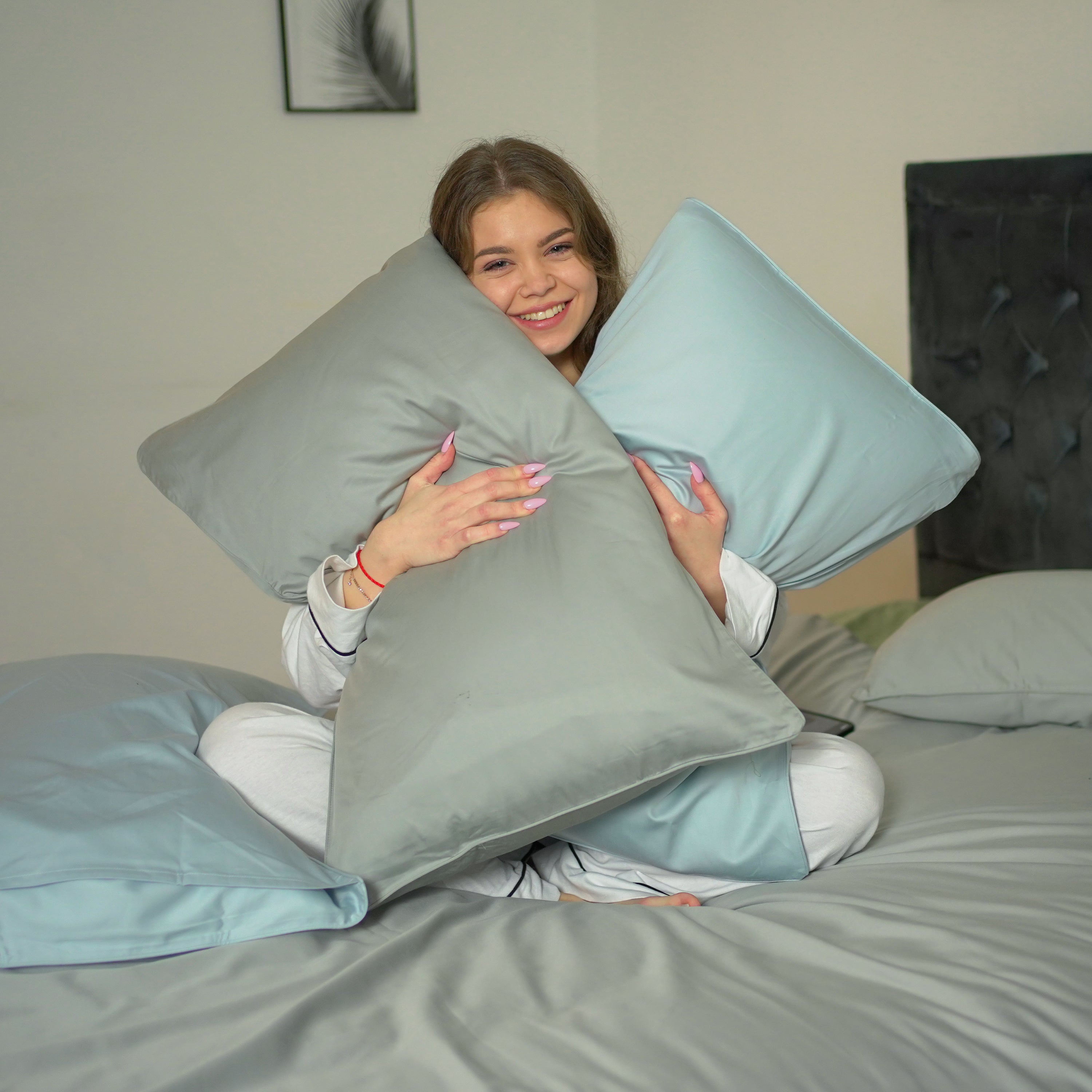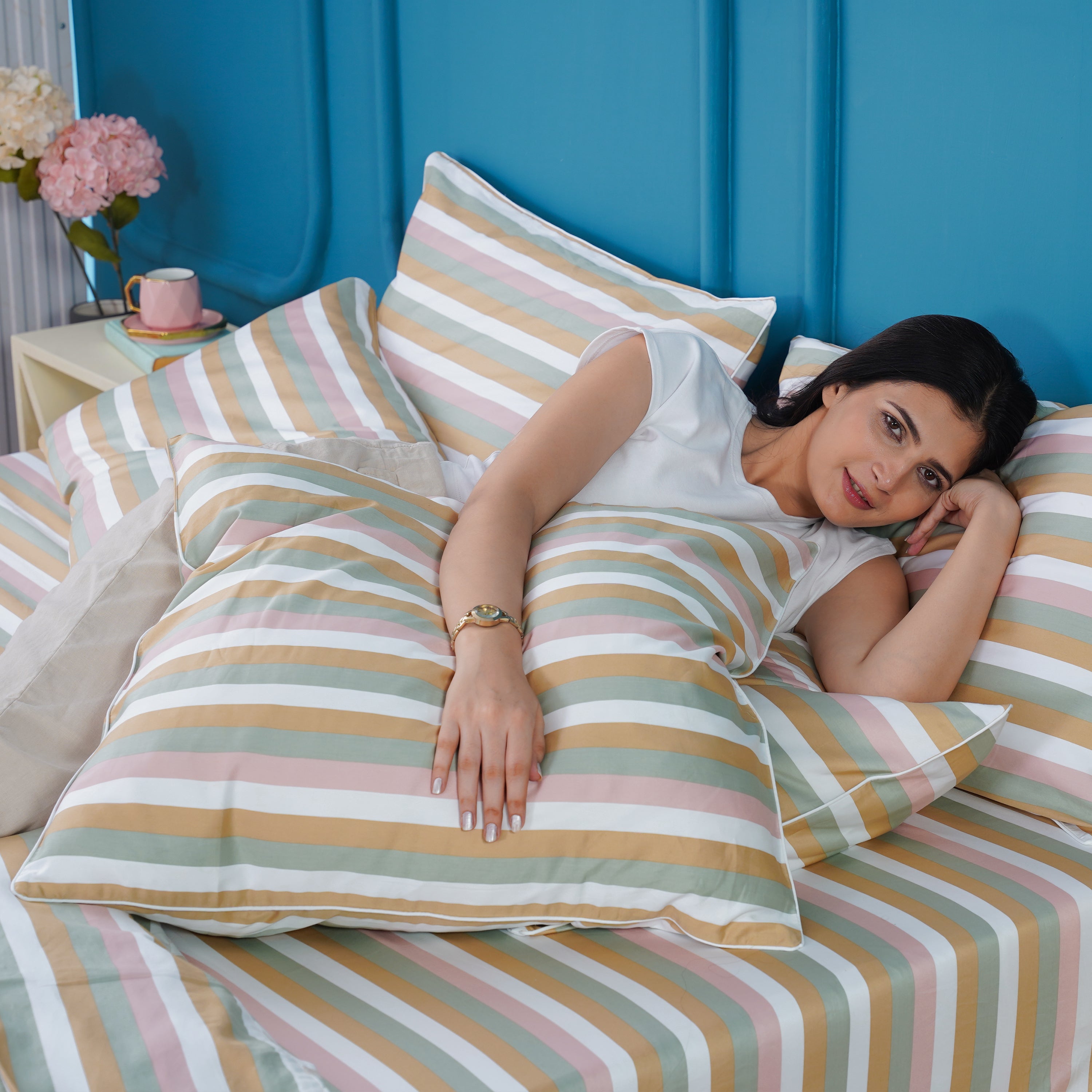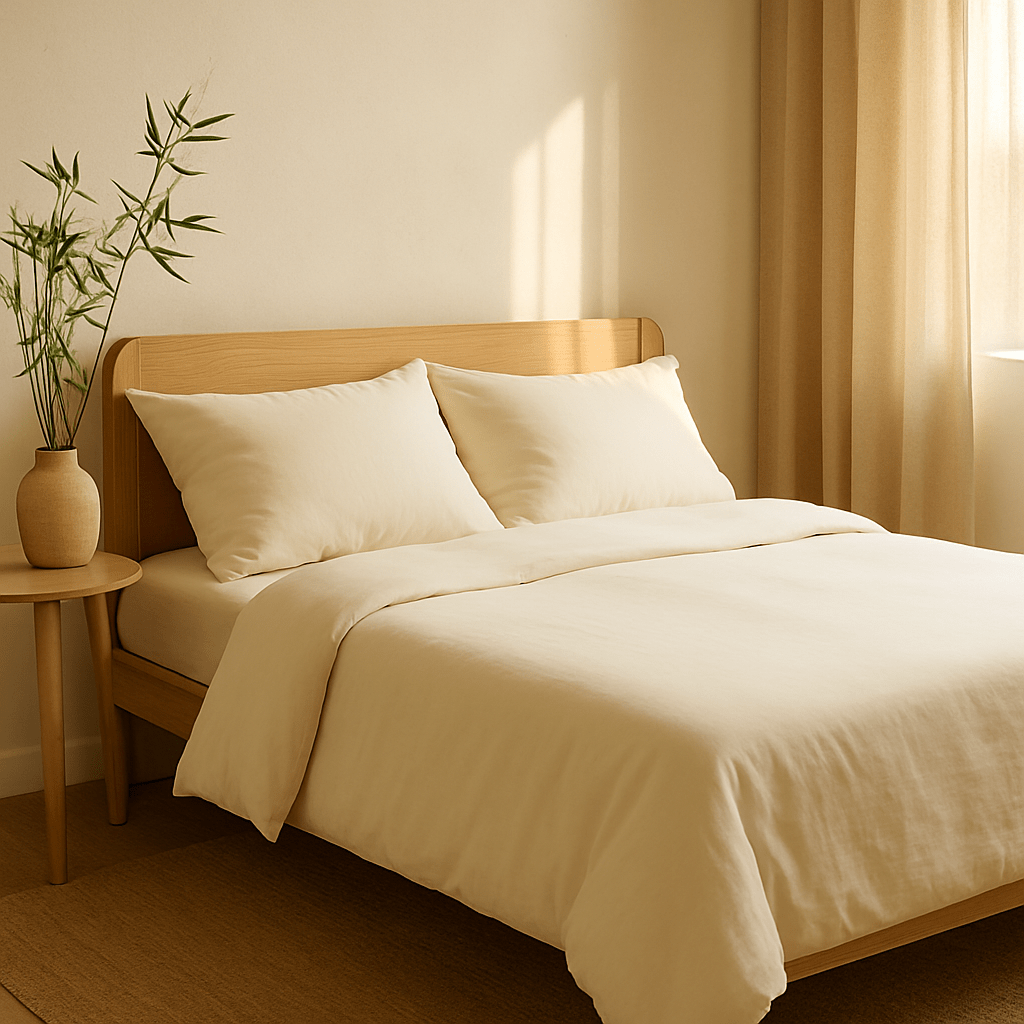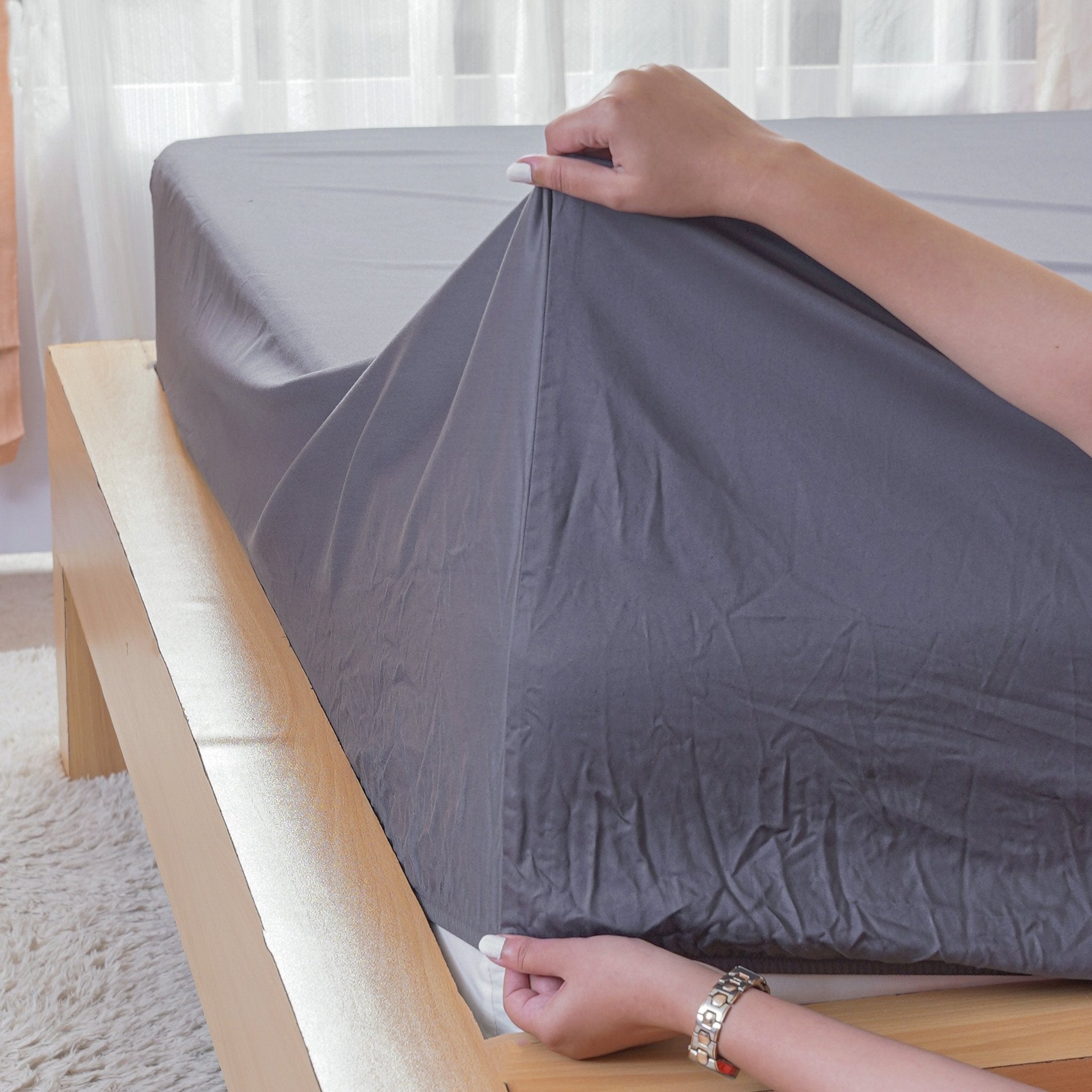Mattress Protectors
Let customers speak for us
What customers think about the store
The reviews praise the exceptional quality, softness, and cooling properties of the bamboo bedding. Customers rave about the deep fitted sheets that stay in place, preventing bunching. They appreciate the attention to detail like extra wide pillowcase openings...
AI-generated from customer reviews.
Mattress Protectors for Every Bed Size & Season
Keep your mattress fresher for longer with our easy-care protectors. From discreet waterproof layers for family life to softly quilted cushioning for added cosiness, our range helps you sleep comfortably while shielding against spills, sweat and everyday wear and tear.
Choose your protection
- Waterproof Mattress Protector — discreet, breathable barrier to help guard against spills and night-time accidents without that crinkly feel.
- Quilted Mattress Protector — lightly cushioned and soft against the skin; great for an extra touch of comfort and year-round use.
- Cot Bed Waterproof Protector — practical, washable layer designed for little sleepers.
- Complete the set with Pillow Protectors to keep pillows feeling fresh.
Find the right fit (depth & size)
A snug fit stops your sheet from shifting and keeps the protector smooth under your bedding. Not sure on sizing? Use our UK bedding size guide for quick measurements, then pick from Single, Small Double, Double, King or Super King.
Cooling vs. Cosy
- Sleep hot? Choose our breathable waterproof design to help regulate heat and keep moisture away from your mattress.
- Prefer extra cushioning? Go quilted for gentle softness and a warm, comfortable feel without adding bulk.
Care that fits your routine
Our protectors are machine-washable and designed for regular laundering. Wash, dry and pop back on the bed with minimal fuss. For best results, follow the product care label.
Tip: pair with deep-fit fitted sheets so everything stays smooth and secure.
Mattress Protector FAQs
Are mattress protectors noisy or hot to sleep on?
Modern protectors are designed to be quiet and breathable. If you’re sensitive to heat or sound, choose a soft, breathable waterproof layer or a quilted non-waterproof option.
Will a protector affect the feel of my mattress?
High-quality protectors are slim and sit smoothly under your sheet. Quilted versions add a touch of cushioning without changing overall support.
How often should I wash or replace a protector?
Wash every 4–8 weeks (or sooner after spills). Replace every 2–3 years, or earlier if the layer shows wear or reduced performance.
What’s the difference between a protector and a topper?
A protector shields against spills, sweat and allergens. A topper adds extra comfort. You can use both: topper first, protector over the top, then your fitted sheet.
Can I use a mattress protector on a memory foam mattress?
Yes, mattress protectors are suitable for memory foam mattresses. Ensure the protector is breathable to maintain the memory foam’s temperature-regulating properties and does not interfere with its contouring benefits.
Are mattress protectors noisy or do they make the bed hot?
The noise level and heat retention of a mattress protector depend on its materials. Some waterproof protectors made from synthetic materials might produce a slight crinkling sound or trap heat. Choosing protectors made from breathable, natural fabrics like cotton can enhance comfort and reduce noise.
Can a mattress protector help with allergies?
Yes, mattress protectors can assist in reducing allergy symptoms by acting as a barrier against dust mites, pet dander, and other common allergens. Opting for protectors labeled as hypoallergenic or those designed to block allergens can create a healthier sleeping environment.
How often should I replace my mattress protector?
The lifespan of a mattress protector varies based on its quality and usage. Generally, it’s advisable to replace it every two to three years or sooner if it shows signs of wear, damage, or reduced effectiveness.
Do mattress protectors affect the feel of my mattress?
High-quality mattress protectors are designed to be discreet and should not significantly alter the feel or comfort of your mattress. However, some waterproof protectors might introduce a slight change in texture. Choosing a protector made from breathable and soft materials can minimize any potential impact on comfort.
Can I use a mattress protector with an electric blanket?
Yes, you can use a mattress protector with an electric blanket. For optimal safety and comfort, place the mattress protector beneath the electric blanket. Always consult the manufacturer’s guidelines for both products to ensure compatibility.
How do I choose the right size mattress protector?
To select the correct size, match the dimensions of your mattress (length, width, and depth) with the protector. Mattress protectors come in standard sizes like Single, Double, King, and Super King. Ensuring a proper fit prevents shifting and provides optimal protection.
Are all mattress protectors waterproof?
No, not all mattress protectors are waterproof. Some are designed primarily to protect against dust mites and allergens without offering liquid resistance. If waterproofing is essential for you, ensure you select a protector specifically designed with this feature.
What is a mattress protector, and why do I need one?
A mattress protector is a removable bedding item that sits on top of or encases your mattress to safeguard it from spills, stains, allergens, and general wear and tear. Using a mattress protector extends the lifespan of your mattress and maintains a hygienic sleeping environment.
Do mattress protectors come in different thicknesses?
Yes, mattress protectors vary in thickness, ranging from thin, discreet options to thicker, padded versions for added comfort. Choose based on your personal comfort preference and protection needs.
What is the difference between a mattress protector and a mattress pad?
• Mattress protectors primarily protect against spills, stains, allergens, and dust mites.
• Mattress pads typically provide extra cushioning, softness, or temperature regulation but may offer minimal protection against liquids or allergens.
Can I use a mattress protector over a mattress topper?
Yes, mattress protectors can be placed over mattress toppers. Ensure your protector has sufficient depth to comfortably accommodate both the mattress and topper, preventing slipping or shifting.
Are there mattress protectors specifically for sensitive skin?
Yes, there are hypoallergenic mattress protectors made from gentle, natural fabrics like bamboo or cotton. These protectors reduce irritation and are suitable for people with sensitive skin, eczema, or other skin conditions.
Will a mattress protector make my mattress last longer?
Absolutely. Mattress protectors shield mattresses from moisture, stains, and allergens, preventing premature wear and tear. Regular use of a protector can significantly extend the lifespan of your mattress.
Can mattress protectors help prevent mould or mildew?
Yes. Waterproof and breathable mattress protectors help reduce moisture build-up, significantly lowering the risk of mould and mildew developing on your mattress, which is particularly important in humid climates.
How frequently should I wash my mattress protector?
It’s recommended to wash your mattress protector every 1–2 months or more frequently if there are allergies, spills, or pets involved. Regular washing maintains hygiene and the protector’s effectiveness.
Will a mattress protector stop my mattress warranty from becoming void?
Often, mattress warranties require the use of a mattress protector to remain valid. Using a protector helps guard against damage and stains, potentially preserving your warranty coverage. Always check your mattress manufacturer’s warranty conditions.
Can I wash a mattress protector in the washing machine?
Yes, most mattress protectors are machine washable, making them easy to care for. Always check the care instructions to ensure the appropriate washing temperature and drying method.
Do mattress protectors protect against bed bugs?
Standard mattress protectors may not offer full protection against bed bugs. For comprehensive defence, consider using a mattress encasement that fully encloses the mattress with a secure zipper, preventing bed bugs from entering or escaping.
Which Sheet Story protector should I choose?
For discreet spill protection, pick our Waterproof Mattress Protector. If you prefer gentle padding, choose the Quilted Mattress Protector. For little sleepers, try the Cot Bed Waterproof Protector. Keep pillows fresh with Pillow Protectors.
